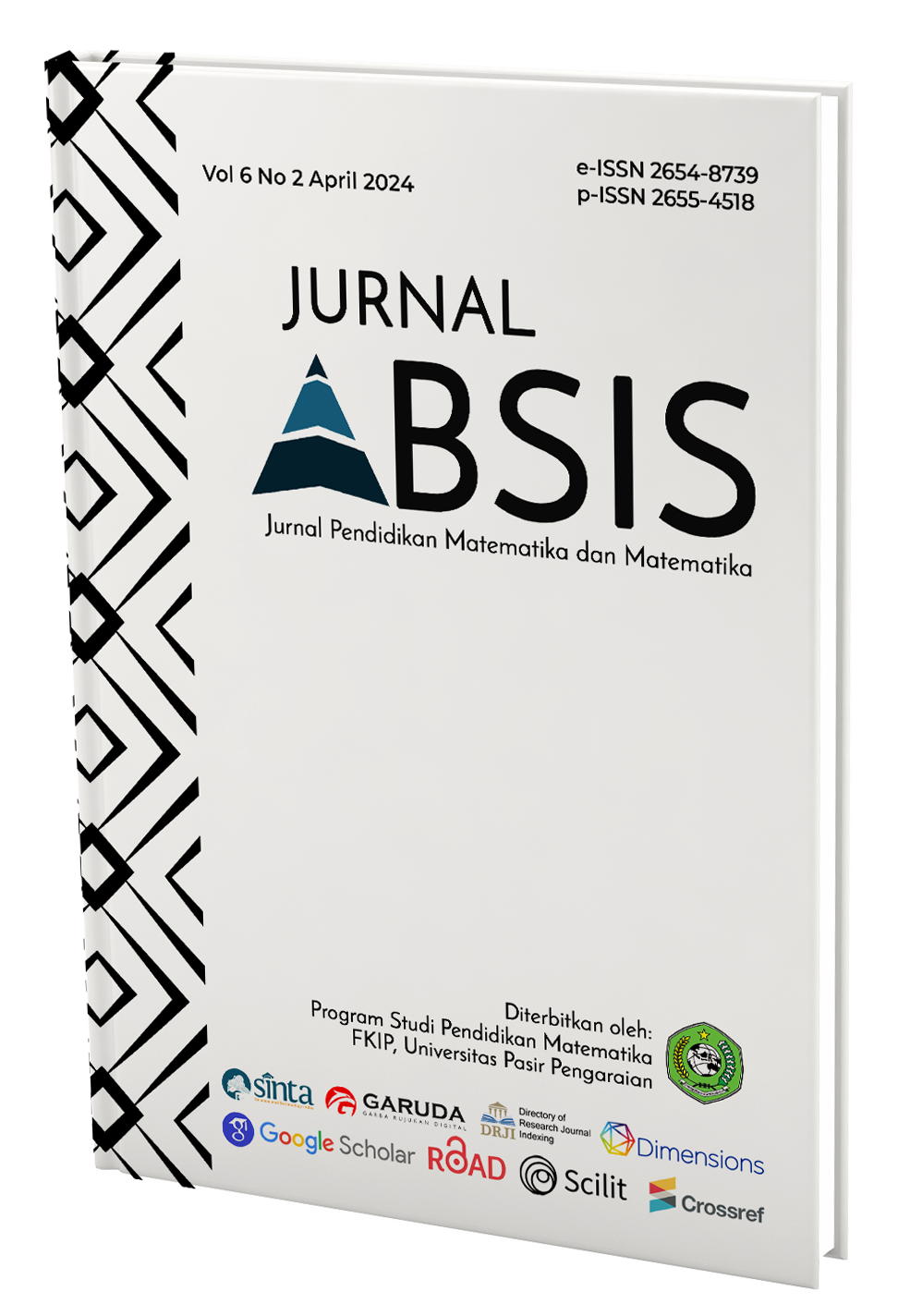Pengaruh Variabel Eksogen terhadap Pemodelan Curah Hujan di Kota Bandung
DOI:
https://doi.org/10.30606/absis.v6i2.2375Keywords:
Abstract
This research is motivated by the significant role of rainfall as a natural occurrence that has a significant impact on various sectors. The main objective of this study is to evaluate the influence of exogenous variables in rainfall forecasting by comparing the accuracy of SARIMA, SARIMAX, hybrid SARIMA-ANN, and hybrid SARIMAX-ANN models. The initial modeling of this research did not involve exogenous variables and resulted in a MAPE (Mean Absolute Percentage Error) of 43,65% for the SARIMA model and 42,86% for the hybrid SARIMA-ANN model. The findings show that incorporating the exogenous variable of sunlight duration positively contributes to improving the accuracy of rainfall forecasting using the SARIMAX model with a MAPE of 28.69% and the hybrid SARIMAX-ANN model with a MAPE of 27,03%. This research contributes to the development of rainfall forecasting methods by incorporating other influencing variables.
Downloads
References
Arunraj, N. S., Ahrens, D., & Fernandes, M. (2016). Application of SARIMAX Model to Forecast Daily Sales in Food Retail Industry. International Journal of Operations Research and Information Systems, 7(2), 1–21. https://doi.org/10.4018/ijoris.2016040101
Cools, M., Moons, E., & Wets, G. (2009). Investigating the variability in daily traffic counts through use of ARIMAX and SARIMAX models. Transportation Research Record, (2136), 57–66. https://doi.org/10.3141/2136-07
Fiskin, C. S., Turgut, O., Westgaard, S., & Cerit, A. G. (2022). Time series forecasting of domestic shipping market: Comparison of SARIMAX, ANN-based models and SARIMAX-ANN hybrid model. International Journal of Shipping and Transport Logistics, 14(3), 193–221. https://doi.org/10.1504/IJSTL.2022.122409
Fitriyati, N, Wijaya, M., Pagri, M. I., & Inayah, N. (2022). Forecasting domestic ship passengers in the Makassar Port using feed-forward neural network and SARIMAX. 7th International Conference Onn Mathematics: Pure, Applied and Computtuon:Mathematics of Quantumm Computing.
Fitriyati, Nina, Mahmudi, M., Wijaya, M. Y., & Maysun, M. (2022). Forecasting Indonesian inflation using a hybrid ARIMA-ANFIS. Desimal: Jurnal Matematika, 5(3), 289–304. https://doi.org/10.24042/djm.v5i3.14093
Geurts, M. (1977). American Marketing Association. Journal of Marketing Research, 14(2), 269. https://doi.org/https://doi:10.2307/3150485
Hanurowati, N., Mukid, M. A., & Prahutama, A. (2016). Pemodelan dan Peramalan Indeks Harga Saham Gabungan (IHSG), Jakarta Islamic Index (JII), dan Harga Minyak Dunia Brent Crude Oil Menggunakan Metode Vector Autoregressive Exogenous (VARX). Jurnal Gaussian, 5(4), 683–693. https://doi.org/10.14710/j.gauss.5.4.683-693
Ibrahim, A., & Musa, A. O. (2016). On The Performance of Sarima and Sarimax Model in Forecasting Monthly Average Rainfall in Kogi State, Nigeria. FUDMA: Journal of Sciences (FJS), 7(6), 24–31. https://doi.org/10.33003/fjs-2023-0706-2095
Kafara, Z., Rumlawang, F. Y., & Sinay, L. J. (2017). Peramalan Curah Hujan Dengan Pendekatan Seasonal Autoregressive Integrated Moving Average (SARIMA) Studi Kasus : Curah Hujan Bulanan di Kota Ambon, Provinsi Maluku. Jurnal Ilmu Matematika dan Terapan, 11(1), 63–74. https://doi.org/10.30598/barekengvol11iss1pp63-74
Le, T.-T., Pham, B. T., Ly, H.-B., Shirzadi, A., & Le, L. M. (2019). Development of 48-hour Precipitation Forecasting Model using Nonlinear Autoregressive Neural Network. Innovation of Sustainable Infrastructure, 54. https://doi.org/10.1007/978-981-15-0802-8_191
Mistawati, M., Yasnani, Y., & Lestari, H. (2021). Forecasting prevalence of dengue hemorrhagic fever using ARIMA model in Sulawesi Tenggara Province, Indonesia. Public Health of Indonesia, 7(2), 75–86. https://doi.org/10.36685/phi.v7i2.411
Msofe, Z. A., & Mbago, M. C. (2019). Forecasting international tourist arrivals in zanzibar using box – jenkins SARIMA model. General Letters in Mathematics, 7(2), 100–107. https://doi.org/10.31559/glm2019.7.2.6
Nontapa, C., Kesamoon, C., Kaewhawong, N., & Intrapaiboon, P. (2021). A New Hybrid Forecasting Using Decomposition Method with SARIMAX Model and Artificial Neural Network. International Journal of Mathematics and Computer Science, 16(4), 1341–1354.
Rahayu, I., Marwati, R., & Rachmatin, D. (2022). Peramalan Jumlah Penderita DBD di Provinsi Jawa Barat dengan Metode Hybrid Sarimax-Ann. JMT : Jurnal Matematika Dan Terapan, 4(2), 9–19. https://doi.org/10.21009/jmt.4.2.2
Saz, G. (2011). The efficacy of SARIMA models for forecasting inflation rates in developing countries: The case for Turkey. International Research Journal of Finance and Economics, 62(62), 111–142.
Shapiro, S. S., & Wilk, M. B. (1965). An Analysis of Variance Test for Normality (Complete Samples). Biometrika, 52(3/4), 591. https://doi.org/10.2307/2333709
Sitrorus, V. B., Wayuningsih, S., & Hayati, M. N. (2017). Peramalan dengan Metode Seasonal Autoregressive Integrated Moving Average (SARIMA) di Bidang Ekonomi (Studi Kasus: Inflasi Indonesia). Jurnal EKPONENSIAL, 8(1), 126–132.
Supriyanto, S., Sunardi, S., & Riadi, I. (2022). Pengaruh Nilai Hidden layer dan Learning rate Terhadap Kecepatan Pelatihan Jaringan Saraf Tiruan Backpropagation. JIKO (Jurnal Informatika Dan Komputer), 6(1), 27. https://doi.org/10.26798/jiko.v6i1.508
Wei, W. W. S. (2006). Time Series Analysis Univariate and Multivariate Methods (2nd Edition) Addison Wesley (2005).pdf. New Introduction to Multiple Time Series Analysis, pp. 1–764.
Zhang, G. P. (2003). Time Series Forecasting Using a Hybrid ARIMA and Neural Network Model. Neurocomputing, 50, 159–175. https://doi.org/10.1016/S0925-2312(01)00702-0








